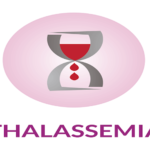- “Union Health Ministry has highlighted need for all states to monitor district wise cases and deaths on a daily basis
- MoHFW has advised States and UTs through formal communications, video conferences and through deployment of Central teams for recording of deaths in accordance with prescribed guidelines
- Robustness of statute based Civil Registration System (CRS) ensures proper recording of births and deaths in the country”
New Delhi, August 04, 2021:
There have been some speculative media reports inferring undercounting of COVID-19 deaths from eight states, while also stating that the deaths can only be estimated and the exact data may never be known. The report highlights data from the Civil Registration System (CRS) and Health Management Information System (HMIS) including all-cause death numbers, leading to erroneous inferences terming it as ‘counting the uncounted.’
It is clarified that given the robust and statute-based Death Registration System in India, while some cases could go undetected as per the principles of Infectious Disease & its management, missing out on deaths is completely unlikely. This could also be seen in the case fatality rate, which as on 31st December 2020 stood at 1.45% and even after an unexpected surge observed in the second wave in April-May 2021, the case fatality rate today stands at 1.34%.
Moreover, the reporting of daily new cases and deaths in India follows a bottom-up approach, where districts report the number of cases & deaths to the State Governments and to the Union Ministry on a continuous basis. As early as May 2020, to avoid inconsistency or confusion in the number of deaths being reported, Indian Council of Medical Research (ICMR) had also issued ‘Guidance for appropriate recording of COVID-19 related deaths in India’ for correct recording of all deaths by States/UTs as per ICD-10 codes recommended by WHO for mortality coding. Union Health Ministry has been repeatedly advising States and UTs through formal communications, multiple video conferences and through deployment of Central teams for recording of deaths in accordance with laid down guidelines. States have been advised to conduct thorough audits in their hospitals and report any cases or deaths that could have been missed with a district and date-wise details so as to guide a data-driven decision making.
The Union Health Ministry has regularly emphasized the need for a robust reporting mechanism for monitoring district wise cases and deaths on a daily basis. States consistently reporting lower number of daily deaths has been advised to re-check their data. A case in point is the Union Health Ministry writing to the State of Bihar to provide detailed date and district wise break-up of the reconciled number of deaths.
In addition to reporting by States/UTs, the robustness of statute based Civil Registration System (CRS) ensures all births and deaths in the country get registered. The CRS follows process of data collection, cleaning, collating and publishing the numbers, which although is a long-drawn process, but ensures no deaths are missed out. Because of the expanse and the amplitude of the activity, the numbers are usually published the next year, which has also been acknowledged in the referred to media report.
During the peak of 2nd wave, the health system across the country was focused on effective clinical management of cases requiring medical help due to which correct reporting & recording of COVID deaths could have been delayed but later was reconciled by the States/UTs. The reconciling of deaths is still being carried out allaying all speculations of underreporting and undercounting of deaths due to COVID.
It is a well-known fact that there shall always be some differences in mortality recorded during a profound and prolonged public health crisis such as COVID pandemic. Well conducted research studies on mortalities are usually done after the event when data on mortalities are available from reliable sources. The methodologies for such studies are well established, the data sources are defined as also the valid assumptions for computing mortality.
healthysoch







